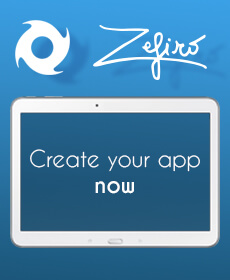You'll learn how to store data in swift using the core data entity. You'll see how to use core data to save, read data and clear data from your iOS app. We'll see a simple example that shows how to define an entity in core data and how to save and read the data from it.
Let's create a new Swift single view project. When filling the app title, be sure to turn on the core data feature.

When the swift project has been created, you can access to the file with the xcdatamodeld extension. Here you'll can define your entity name and structure. At first let's create the entity. Click on the add entity button (bottom). A new entity will be added. Let's tap on it (top-left) and put Data as an entity name. Finally with the Data entity selected, under the attributes section let's define our entity object. In this example we'll use an array of strings as an object. Tap on the plus button under the attributes section and set the name for the attributes to name and, as for the type, write string.

Now let's code. Open the ViewController.swift file and import the core data features by writing at the top:
import UIKit import CoreData //import the CoreData
A core data object can be defined as
var name_list = [NSManagedObject]()
Let's define now the functions for clearing the data, storing new data, and reading the data.
Store data to a core data entity
The function for store the data to the core data entity is presented. The entity name in this case is defined as "Data" and we are storing the key called name.
func save(name:String)
{
let appDelegate = UIApplication.sharedApplication().delegate as AppDelegate
let managedContext = appDelegate.managedObjectContext!
//Data is in this case the name of the entity
let entity = NSEntityDescription.entityForName("Data",
inManagedObjectContext: managedContext)
let options = NSManagedObject(entity: entity!,
insertIntoManagedObjectContext:managedContext)
options.setValue(name, forKey: "name")
var error: NSError?
if !managedContext.save(&error)
{
println("Could not save")
}
//uncomment this line for adding the stored object to the core data array
//name_list.append(options)
}
Read data from a core data entity
The function for reading data from core data is now defined. This function perform a query on the core data entity and all the results are taken.
func read()
{
let appDelegate = UIApplication.sharedApplication().delegate as AppDelegate
let managedContext = appDelegate.managedObjectContext!
let fetchRequest = NSFetchRequest(entityName: "Data")
var error: NSError?
let fetchedResults = managedContext.executeFetchRequest(fetchRequest, error: &error)
as [NSManagedObject]?
if let results = fetchedResults
{
for (var i=0; i < results.count; i++)
{
let single_result = results[i]
let out = single_result.valueForKey("name") as String
println(out)
//uncomment this line for adding the stored object to the core data array
//name_list.append(single_result)
}
}
else
{
println("cannot read")
}
}
Clear data from a core data entity
The clear data from the core data entity function is defined. This function perform a query to take the whole data stored in core data and clear each element.
func clear_data()
{
let appDelegate = UIApplication.sharedApplication().delegate as AppDelegate
let managedContext = appDelegate.managedObjectContext!
let fetchRequest = NSFetchRequest(entityName: "Data")
var error: NSError?
let fetchedResults = managedContext.executeFetchRequest(fetchRequest, error: &error)
as [NSManagedObject]?
if let results = fetchedResults
{
for (var i=0; i < results.count; i++)
{
let value = results[i]
managedContext.deleteObject(value)
managedContext.save(nil)
}
}
}
Simple example
Let's do a simple example that shows how to use the previously defined functions. This will firstly clear all the data previously stored, save some name into the core data entity, and read the data from the core data entity.
override func viewDidLoad() {
super.viewDidLoad()
//clear everything
clear_data()
//save the data
save("kaleidos blog")
save("Put here what you want to store")
read the data and display it in the debug
read()
}









Leave a comment